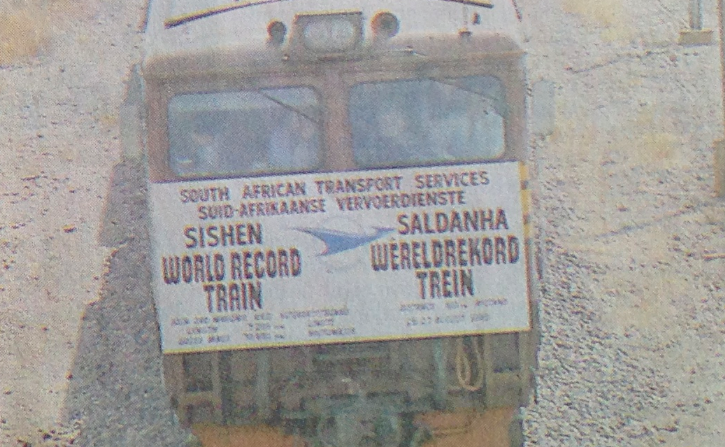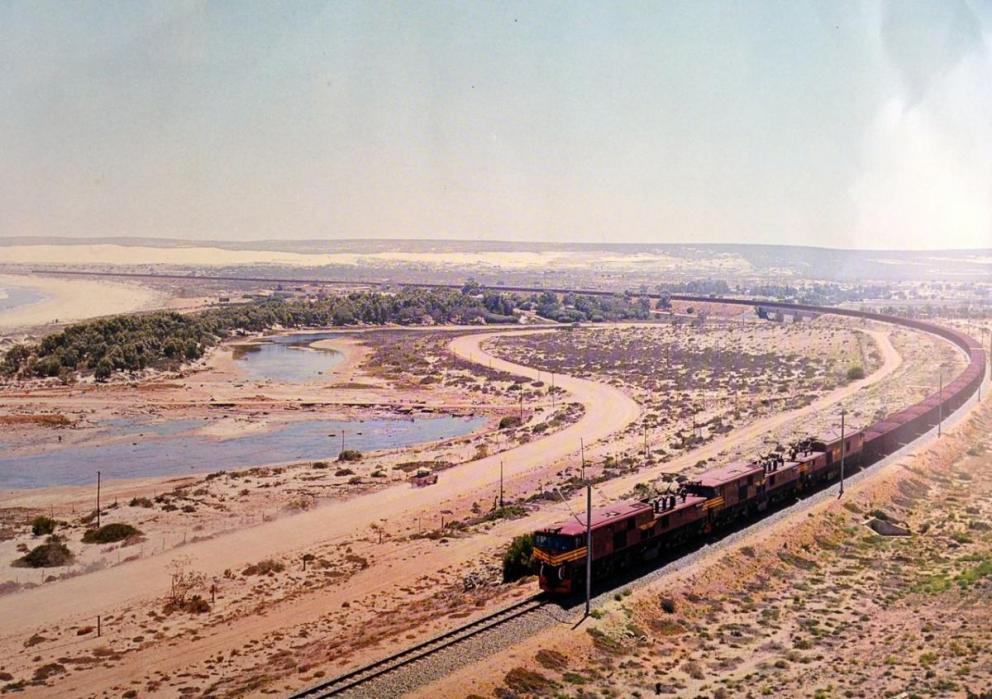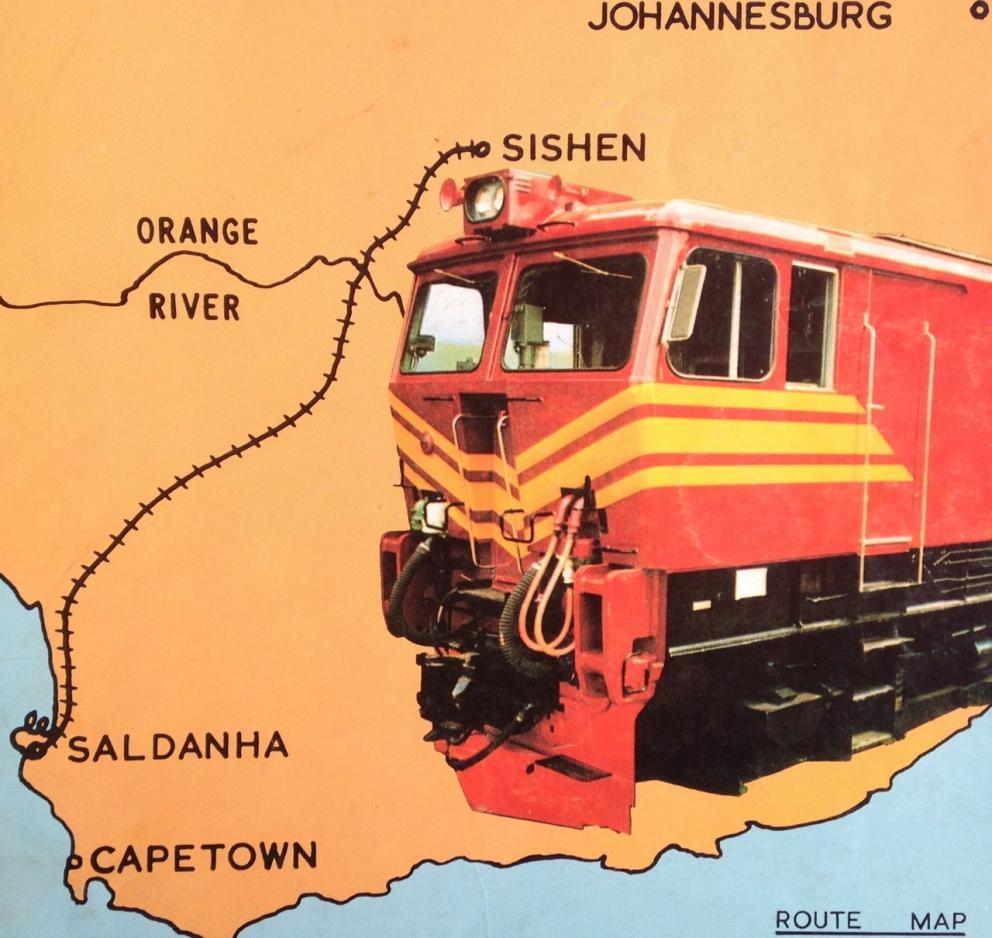
Disclaimer: Any views expressed by individuals and organisations are their own and do not in any way represent the views of The Heritage Portal. If you find any mistakes or historical inaccuracies, please contact the editor.
In South Africa railway men do things big and it doesn't get bigger than the Sishen-Saldanha line. In 1989 the longest and heaviest train in the world made an historic trip down the line. The article below, compiled by Norman Chandler for The Star, tells the story of this record breaking feat. It appears as though a train in Australia broke the record in 2001.
Nightmares do have silver linings, railwaymen happily discovered this weekend. After hours of high drama, South African Transport Services are today toasting a world record for the longest and heaviest train ever run - a 7.281km monster that travelled 861km from Sishen to Saldanha Bay.
In all, 660 fully-laden ore trucks, nine electric locomotives, seven Diesel engines and three other cars made the journey, which began at Sishen at 12.45 on Saturday afternoon and ended at Saldanha at 3.40pm yesterday. But it was a close thing.
The Monster
Dubbed "The Monster", the train - which if placed on Johannesburg's M1 motorway would cover the distance from the Jan Smuts Avenue on-ramp to just short of the Corlett Drive exit - finally left Erts station, here, nearly seven hours late. On its journey it generated sufficient power to light a city the size of Port Elizabeth.
Seven years in the planning, SATS had everything ready for this weekend's bid for a place in the Guiness Book of Records as having run the longest and heaviest train ever assembled. The trucks, pulled and pushed by 16 Class 9E electric and diesel locomotives , dwarfed the 1967 feat of an American train of 500 coal trucks pulled a distance of 252km.
But, just 6 1/2 hours before "The Monster" was due to leave, disaster struck. As it was being coupled early on Saturday morning for a 6am start, a fully-laden truck jumped the rails, ploughed through three sets of railway lines and wrecked meticulous planning.
The unforeseen mishap had SATS engineers tearing their hair out under the searing sun of the northern Cape. It took another record of sorts to pull it together again.
Railway workers, helped by mine personnel, rebuilt the railway line to allow the train to leave Erts at 12.45pm on Saturday. According to SATS officials, the repair time was "remarkable" and involved just about every person at the depot. Stationmaster Mr Gerrie van Dyk had just returned home from a long day at the office putting last-minute touches into place for the record bid when he was told of the derailment.
"I thought: Oh no! We had all the senior people down to see the train off, and this had to happen. But I am very pleased with the speed at which the repairs took place," Mr van Dyk said.
Mr Tom Boshoff, SATS chief director technical operating, was on the spot to ensure that repair work went ahead speedily. The railways team which put together the record bid watched, literally with hearts in mouths, as the 70 543-ton train began to move out of Erts on the long journey through Namaqualand to Saldanha Bay. The train took 12 minutes to pass by the watching engineers.
A similar train (shorter of course) on the Sishen Line - Source Unknown - Peter Ball collection
Fill ship
It was carrying sufficient iron ore to fill a single ship - usually it takes three trains from Sishen to fill one ore-carrying vessel. Every coupling was checked for signs of problems as the train was eased over the newly-repaired railway line. Travelling at 15km/h the train would have needed a braking distance of 3km to come to a complete stop in the event of any derailments.
And to ensure that problems could be speedily attended to, SATS stationed emergency repair teams at strategic points all the way to the west coast port.
Sishen Saldanha Line - Railways Magazine
Comments will load below. If for any reason none appear click here for some troubleshooting tips. If you would like to post a comment and need instructions click here.


